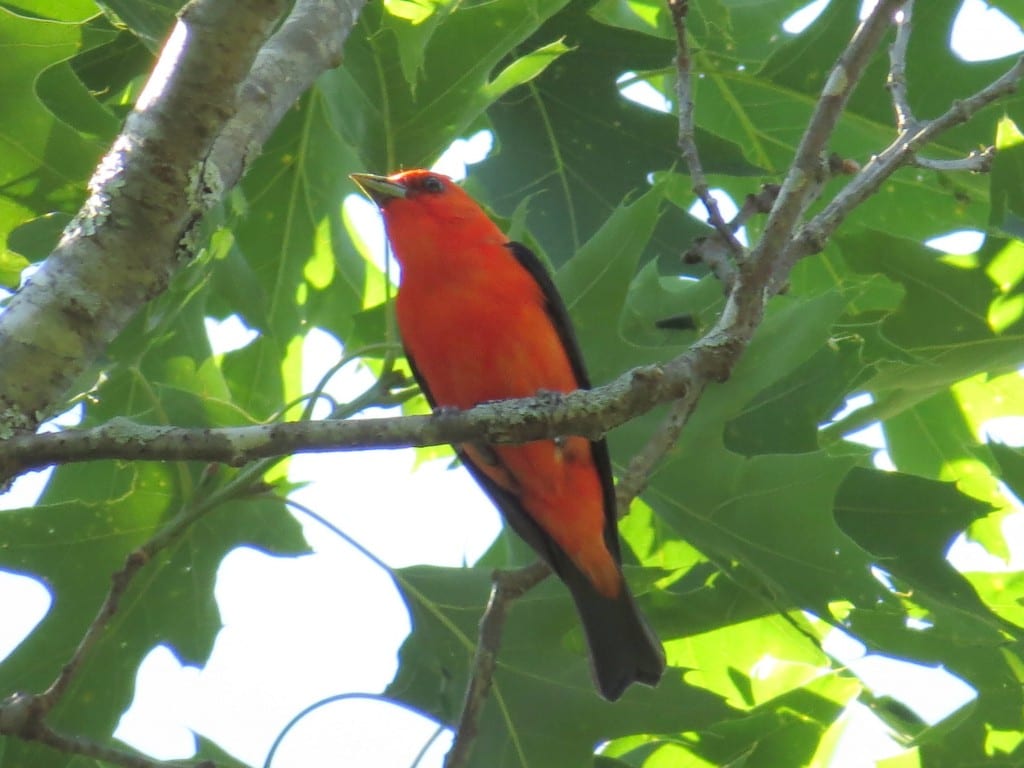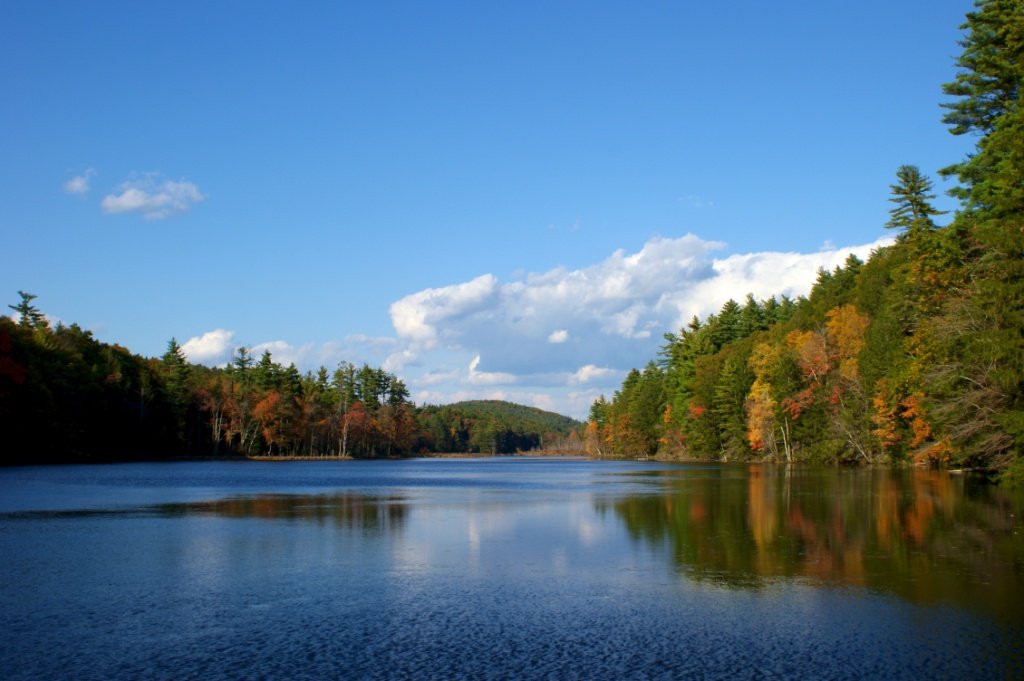
Union, Connecticut– In the summer of 2014, biologists from Audubon Connecticut and scientists from the Connecticut Agriculture Experiment Station teamed up to conduct bird habitat assessments on privately owned woodlands across the state, with the goal of helping landowners take steps to enhance bird habitat in their forests. Connecticut has faced forest fragmentation and an ensuing loss of variety in bird habitats, but intensively managed working woodlands can provide a range of critical habitats, from the unfragmented interior forest habitat favored by neotropical migrating birds like the Scarlet Tanager, pictured above, to the early successional habitat favored by shrubland and grassland birds.
Among the woodlands assessed was the Myers Pond Forest in Union, a 450-acre woodland owned by Hull Forestlands and managed by Hull Forest Products, a CT sawmill and woodland management service. Permanently protected with a conservation easement held by the Nature Conservancy, Hull’s Myers Pond Forest is surrounded by the 8,000 acre Yale University Forest, creating a large tract of contiguous woodland. The property has been formally managed for timber production for over a century, and most recently has undergone harvests to remove diseased Hemlock and promote White Pine regeneration.

Patrick Comins, Director of Bird Conservation at Audubon Connecticut, was impressed with the quality of the bird habitat at the Myers Pond Forest as well as the way in which Hull’s forest management activities had led to forest regeneration. He hailed the property as “truly one of the crown jewels of forestland in Connecticut.” Jeffrey Ward, Chief Scientist at the Dept. of Forestry and Horticulture at the Connecticut Agriculture Experiment station, declared the Myers Pond Forest the “best managed property he had seen” so far in their bird habitat assessments, which included over 25 properties in Connecticut.
In southern New England, residential development and suburbanization have contributed to forest fragmentation, and as forest parcels grow smaller and smaller, they provide less viable habitat for birds. Smaller parcels also make it more difficult to practice forest management, and as a result, there is less variety of bird habitat. In contrast, when timber harvests are periodically conducted as part of a forest management plan, they create temporary openings in the woods that quickly regenerate to shrubbery, then young forest, eventually growing into mature forest, and they provide a variety of bird habitats in the process.
Hull Forestlands and Hull Forest Products are proud of their role in contributing critical habitat to Connecticut’s birds and grateful that Audubon Connecticut was able to perform the assessments and provide feedback for landowners.
Learn more about our woodland management services for landowners







